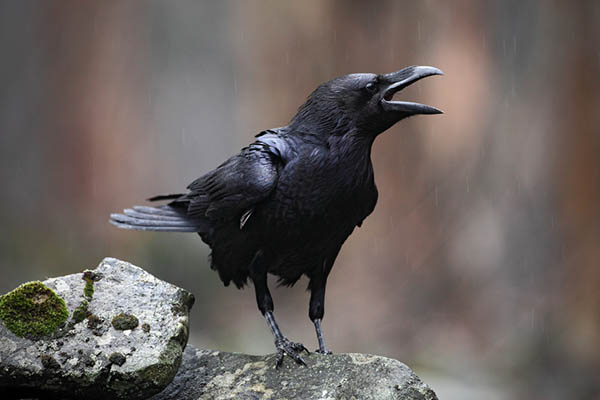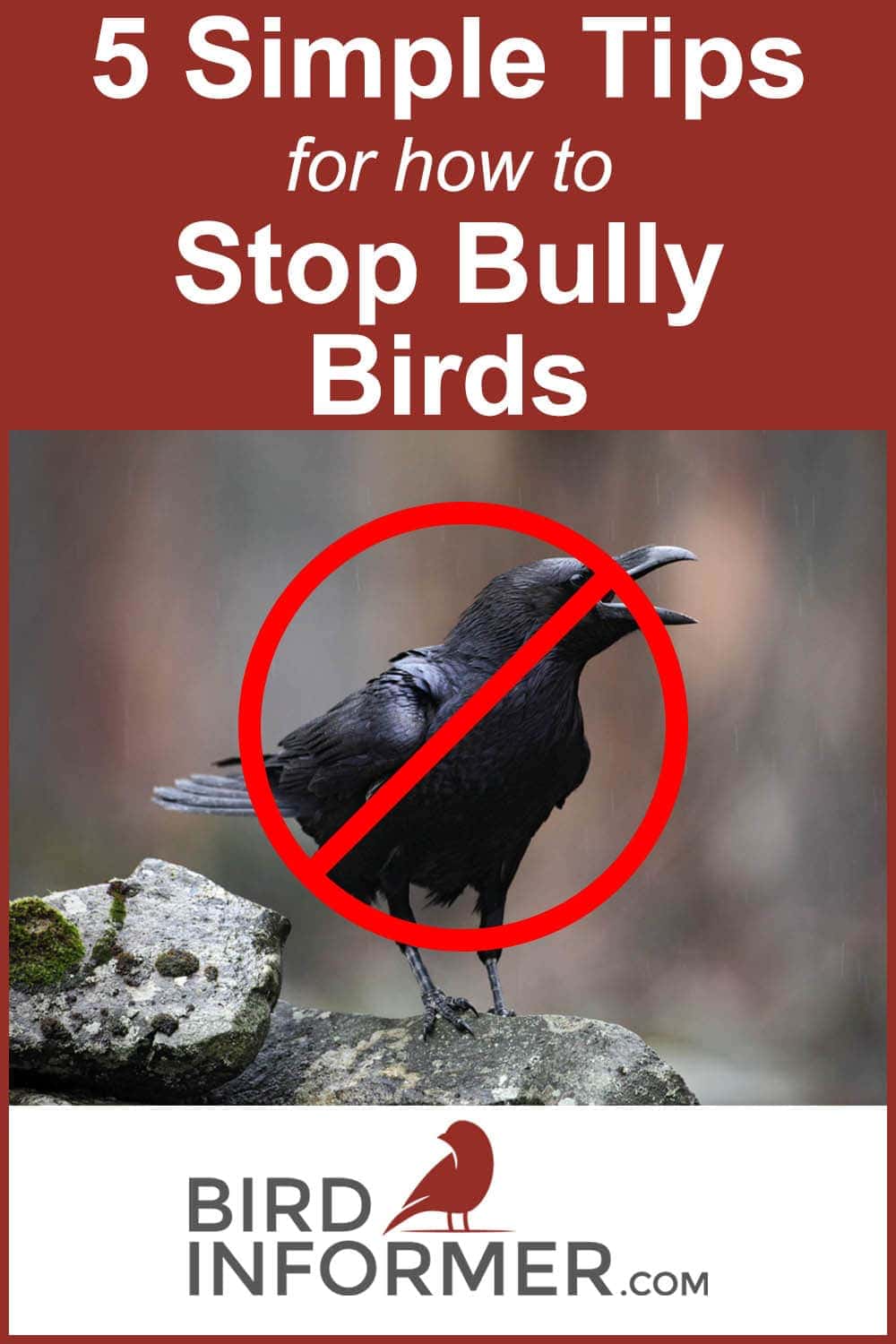Contents
- Tip #1: Change The Food You Offer To Prevent Bully Birds At Feeders
- Tip #2: Buy Feeders They Can’t Use
- Tip #3: Keep Surroundings Clean To Prevent Bully Birds At Feeders
- Tip #4: Use Their Weakness
- Tip #5: Accommodate Them
- The Most Common Bully Birds
- Final Thoughts About Dealing With Bully Birds At Your Feeders
Everyone is familiar with bullies. They are the ones who think they are so big and strong that they can push anyone around to get what they want. And sadly, even in the bird kingdom, you’ll encounter bully birds at feeders.
Bully birds usually come in large numbers and occupy the bird feeders for themselves. They are also generally bigger and more aggressive, which leaves smaller birds no choice but to leave. As a bird watcher, it’s essential to know how to deal with them, and there are actually five best ways to do that:
- Changing the food you offer
- Buying bird feeders they can’t use
- Keeping your surroundings clean
- Using their weaknesses
- Accommodating them
In this article, I’ll go over each of these, one by one, so you can understand why it works. I’ll also share with you information about some of the most common bully birds you’ll find in your backyard.
Now, if you’re interested to learn more, let’s dive into the article…
Tip #1: Change The Food You Offer To Prevent Bully Birds At Feeders
The first thing you may want to do is to change the food you offer.
Most bully birds are attracted to corn, wheat, sunflower seeds, and millet. If you remove these seeds from your bird feeders, there’s no reason for them to stop by your backyard anymore. Therefore, the smaller birds can eat in peace.
But the next question is, what foods can you offer instead? Well, you have several choices:
Safflower
Safflower seeds are white-colored seeds that are a bit smaller than sunflower seeds. The seeds are high in fat, protein, and fiber, which are nutrients that birds need.
There are very few birds that like safflower seeds, mainly because they taste bitter. Bully birds that won’t be interested in these seeds are:
Unfortunately, some bully birds might still be interested; take a Blue jay, for example. But at least you’ve lessened the competition.
As for your other birds, you really don’t have anything to worry about that. Switching to safflower seeds will still help you attract:
And a whole lot more!
Plain Suet
Suet helps birds gain energy through the winter season. It’s usually a blend of animal fat and some seeds to make it more attractive to birds. However, you can also serve just plain suet, so you can no longer attract bully birds like starlings and blackbirds.
It might take time for other songbirds to get used to the plain suet, but they’ll eat it. You just need to be patient.
Birds that would most likely still come even with plain suet are woodpeckers and White-breasted nuthatch.
Nyjer Seed
Nyjer seeds, also called thistle seeds, are small, thin, black seeds that several seed-eating birds love. They are a lot smaller than most seeds, but they are actually very nutritious despite their size. They contain high amounts of calories, which makes them perfect for eating during the winter season.
Birds that love these seeds include:
- House and purple finch
- Song sparrows
- American goldfinch
- Pine siskin
- Dark-eyed junco
As for bully birds like House sparrow, they don’t like to deal with these seeds, and this might be because nyjer seeds are super tiny.
Tip #2: Buy Feeders They Can’t Use
Although changing the type of food you offer is effective, there’s a downside: you limit the kind of birds you attract.
Seed-eating birds don’t just restrict themselves to safflower and nyjer seeds. If you only serve those two, birds might end up looking for a new place to eat. So, what do you do?
Well, you can buy feeders that bully birds can’t use. Here are a few that we recommend:
Caged Feeders
Caged feeders are mainly your classic bird feeders but are protected with a metal cage.
Most caged feeders have a tube-style feeder at the center, surrounded by a metal cage. However, you can also find a few hopper feeders that are caged in the market.
The holes in these metal cages are small enough so that only our favorite songbirds can enter through and get access to the feeder. As for bully birds, they are mainly stopped outside the holes of these cages.
The problem, though, is that these feeders might also stop medium-sized birds like the cardinals.
Weight-Activated Feeders
Another type of feeder you can use to stop larger birds from eating the bird seeds is the weight-activated feeders.
How do these feeders work?
Weight-activated feeders usually come with a weight-activated perch bar. These perch bars can only handle the weight of smaller birds. If a larger animal uses this perch bar, it automatically activates, which causes the bird to fall.
These feeders are commonly used for squirrels, but it’s also very effective for large bully birds.
I love these because they are usually adjustable based on the weight of the birds you want to attract. You can adjust to the point that it will allow medium-sized birds like the cardinals and not the larger birds.
Feeders with Smaller Perches
You can also buy feeders with smaller perches. Because of the big difference in size, smaller perches won’t accommodate large birds who need bigger space to land on and hang. This also means that only the small-sized birds can perch and eat.
Upside-Down Feeders
Upside-down feeders would require birds to cling on the bird feeder to eat, which means it will only accommodate clinging birds like woodpeckers, chickadees, goldfinches, and nuthatches. As for starlings, they’ll definitely have a hard time.
Dome Feeders
Dome feeders have two parts, a dish bowl that contains a seed and a hanging dome on top that covers the seeds.
The dome on top usually serves as a shield from squirrels that jump down from a nearby tree. However, these domes are also very effective in keeping larger birds away from the bird feeders.
How?
Well, you can also lower the dome on top and create a very little space between that and the dish. This way, only small-sized birds can fit through that space and eat.
Tip #3: Keep Surroundings Clean To Prevent Bully Birds At Feeders
The next thing you should do is keep your surroundings clean.
Starlings, blackbirds, and pigeons are only a few of the many bully birds that love feeding on the ground. They’ll pick up seeds that have fallen and other wasted seeds that dropped from the bird feeder.
So, by keeping your surroundings clean, you also prevent these birds from visiting your place. Here are a few ways to prevent certain food from dropping on the ground:
Feeder Pole Tray
First, you can use a feeder pole tray. This is like a platform feeder placed right below any feeder you have on a bird feeder pole.
The purpose of this tray is to catch any seeds that fall from your bird feeder. This way, there won’t be any mess on the ground that bully birds will love. This trick, however, has a downside.
Because the feeder pole tray is almost similar to a platform feeder, some bully birds might still come and eat straight on this tray. However, it might not be a really big downside if that means they’ll leave the smaller birds feasting on the bird feeder alone.
You can also add additional protection to your bird feeders, like a dome or a cage, to prevent these bully birds from going near them.
DIY Seed Catcher
If you don’t want to buy a feeder pole tray, you can also make your own seed catcher. Don’t worry; it’s very easy to make.
You only need two things – a pan and any glue.
You can choose any size of pan you can find at home, it could be a stainless one or a plastic. It’s up to you. As long as it’s bigger than your bird feeder and can do its job of catching seeds, that would be no problem.
After that, get your tube feeder and glue that onto the pan. Make sure that you wait until the glue is thoroughly dried out before hanging your bird feeder outside.
And you’re done!
Very easy, right?
If you want to create a distance between your seed catcher and your bird feeder, you can simply drill a hole at the center of your pan and insert that into your pole. Put something below it that will hold it in place.
And there you have it! You now have your very own seed catcher.
No Mess Bird Seed
If you don’t want to deal with any excess seeds, no-mess birdseed is something you should buy.
No mess bird seeds are bird seeds that have already been hulled. Birds don’t already have to deal with cracking the seeds open, which means less time spent on bird feeders because they can just eat.
You don’t have any problems with seed shells falling off the ground. And if there are seeds that accidentally fall, other ground-feeding songbirds would be fast enough to pick those up. Hence, bully birds won’t have any reason to even visit your backyard.
Avoid Ground Feeding
Lastly, avoid ground feeding. Most bully birds feed on the ground. So, try to avoid using platform feeders and other ground-feeding stations that will help attract them.
Tip #4: Use Their Weakness
The next tip to prevent bully birds at feeders is to use their weaknesses, and here are some great ideas:
Feeding Only in Winter
Most bully birds stay in the same area all year round. This makes them familiar with where the feeding grounds are and where they can go to eat. If you’re feeding birds all year round, there is a big chance that they already know your place.
To avoid this from happening, feed only in winter. The cold weather might also force them not to leave their territories, making it easier for your favorite songbirds to feed on your backyard in peace.
There’s actually very little for you to worry about birds during the summer months because the food source is actually abundant.
Decoys
You can also use decoys to drive some bully birds away.
Take crows, for example. If crows are frequently visiting your backyard, you can set a decoy crow on the ground, somewhere that’s away from the bird feeders. When crows notice this, they’ll surely gather around that bird.
If crows assume that one of their companions is dead, they’ll mark your backyard as dangerous, and they will not stop by your place again.
Baffles and Weather Guards
If starlings are your problem, baffles or weather guards would be most effective to use. Starlings tend to avoid any kind of covering. That’s why attaching a baffle on top of your bird feeder will be very effective.
Tip #5: Accommodate Them
Now, if you don’t want to push away these bully birds completely, you can also accommodate them. Feed them, give them shelter, but make sure to put their bird feeders away from others. This way, there would be little to no competition, and birds can happily eat in peace.
The Most Common Bully Birds
Now that we know how to deal with bully birds, let’s try to look at the most common bully birds in our backyards. Understanding the behavior of each of these birds might also help you find a way to control them in the bird feeders.
Crows and Ravens
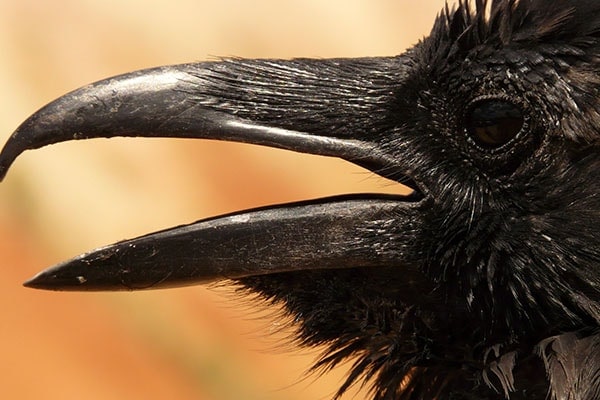
There’s no denying that crows and ravens are bullies. These large birds often gather or forage by group, making it easier for them to push away any bird on their way. They are also known to be opportunistic and would always take advantage of new food sources.
Three of the most popular bully ways they do are:
- Mobbing
- Pulling tails
- Raiding nests
When they encounter a predator, they usually gather in groups to attack a hawk, even if it’s silently perching on a tree. And this, I think, might be acceptable as it’s a natural instinct. However, pulling the tails of smaller birds to get food is not very cool behavior.
Blue Jay

Next on our list are the Blue Jays.
The bird’s beautiful blue color is truly a delight to see in our backyard. However, despite this beauty, they are also number one bullies. Some bully things they do are:
- Steal other birds food
- Attacking small birds
- Eating baby birds and eggs
These birds can also be annoyingly loud. They can mimic the sound of a hawk, which helps them get away from predators quickly. But at the same time, they use this ability so that other birds would fly away.
Despite being beautiful, Blue Jays belong in the same family as the Crows and Ravens, which probably explains why they’re as aggressive as these birds.
Brown-headed Cowbirds
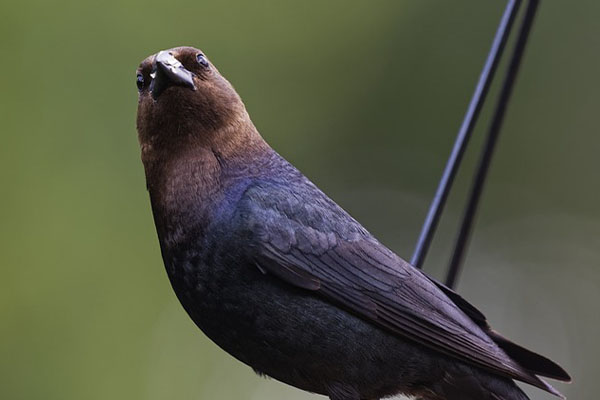
Brown-headed Cowbirds may not be popular bully birds when it comes to stealing other birds’ food. But, they are known to be parasites.
These birds are found to lay eggs on nests of other bird species. They would just usually watch and observe other birds building their nests. And once the time is right, they would pass by and drop one egg on each nest they see.
Now, this may not look like a big problem, but it is.
You see, Brown-headed Cowbirds often do this on the nests of smaller birds. So, naturally, their babies would be a lot larger than the babies of the other bird species. Here’s where the problem comes in.
Since the Cowbirds are larger, they are also a lot stronger and would eat more than the other birds. They are often the only ones healthy, while the other birds die. The worst part is that this behavior caused so many bird species to go endangered.
Common Grackle
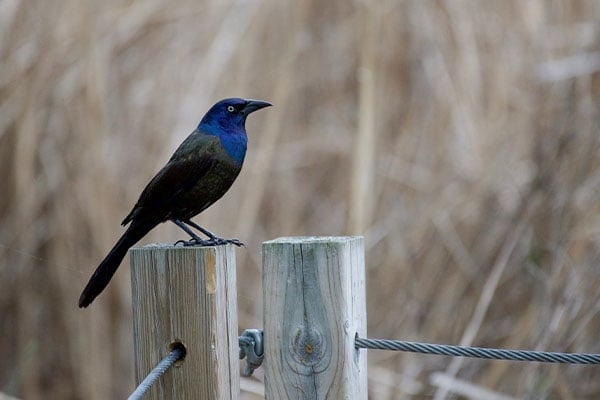
Common Grackles belong to the same family of blackbirds and cowbirds, which is probably why it’s no surprise that they are bullies, too.
These aggressive birds often come in large flocks, forcing smaller birds to move away from bird feeders. On top of that, they also bring great damage to crops, particularly corn crops.
European Starling
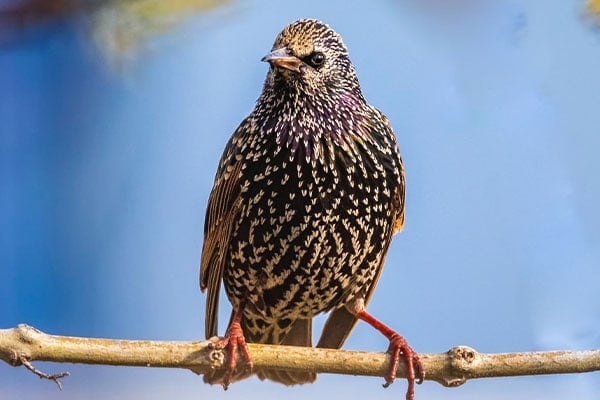
The European Starling is another example of a beautiful bird that is hated by many.
They are considered a nuisance, and the fact that they are invasive species makes this worse.
These birds were only introduced in America, but no one expected that they’d grow in numbers so fast, overtaking the number of our native species. Because of this, food resources became limited.
European starlings are also known as loud and very aggressive birds. They would go through lengths to get the best resources and nesting sites, even if they’d have to injure or kill other bird species.
House Sparrow

House Sparrows are widespread birds that we are all familiar with. They are very adorable, but they can cause significant problems on bird feeders, too.
These birds are known to:
- Competing over nesting sites, even if its means killing adult birds, young birds, and eggs
- Crowding out less aggressive birds
- Taking over food sources
- Reducing diversity at bird feeders
In other words, once house sparrows take over your bird feeders, other birds might not be able to come over to eat. They’ll be claiming territory, which is why you need to deal with them quickly.
Mourning Dove

The Mourning dove may be known to be symbols of peace. However, they can also be very aggressive when they feel the need to. They tend to take the bird feeders all for themselves, scaring smaller birds or even other doves away. However, on good days, they will sometimes settle on seeds that fall on the ground.
Final Thoughts About Dealing With Bully Birds At Your Feeders
When you’re a bird watcher, sometimes all you want is to see birds eating in your backyard at peace. You want them to feel safe, but this can be easily disrupted by bully birds.
Fortunately, it’s no longer that hard to deal with them. Just always remember these five things:
- Change the food you offer
- Buy bird feeders they can’t use
- Keep surroundings clean
- Use their weaknesses
- Accommodate them
As long as you follow two or all of the tips, bully birds won’t be your problem anymore.

